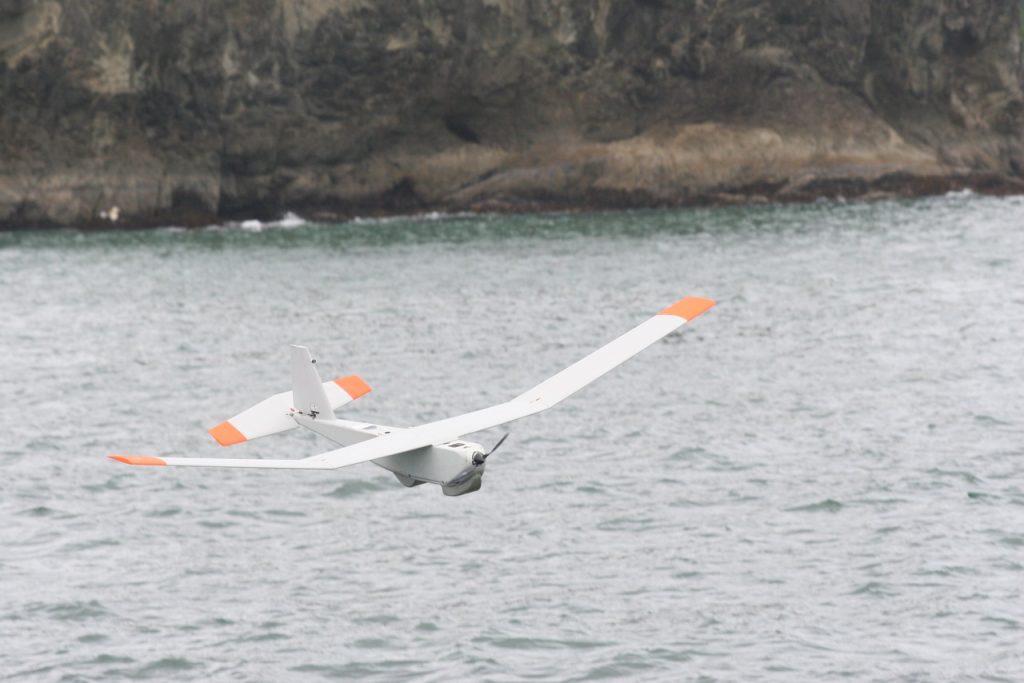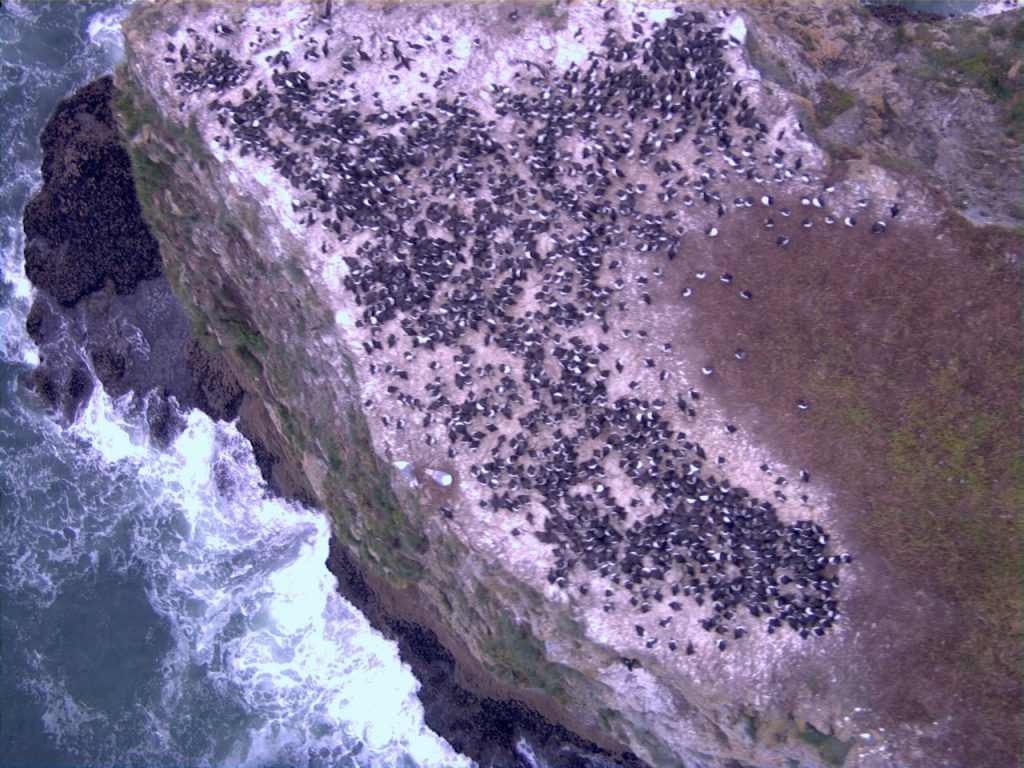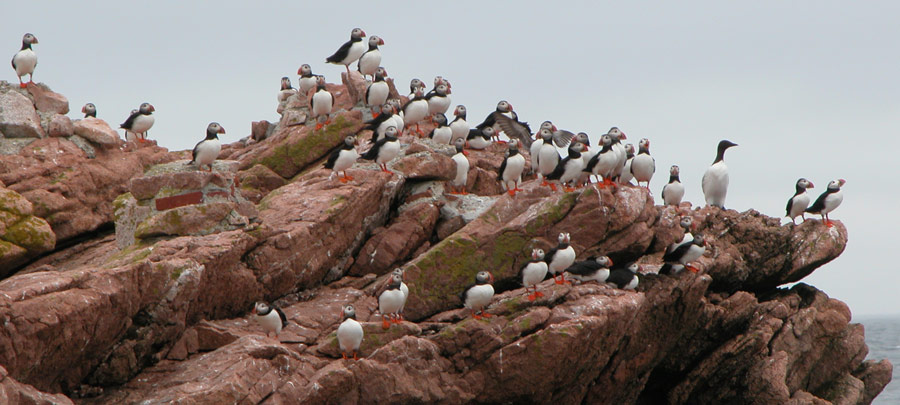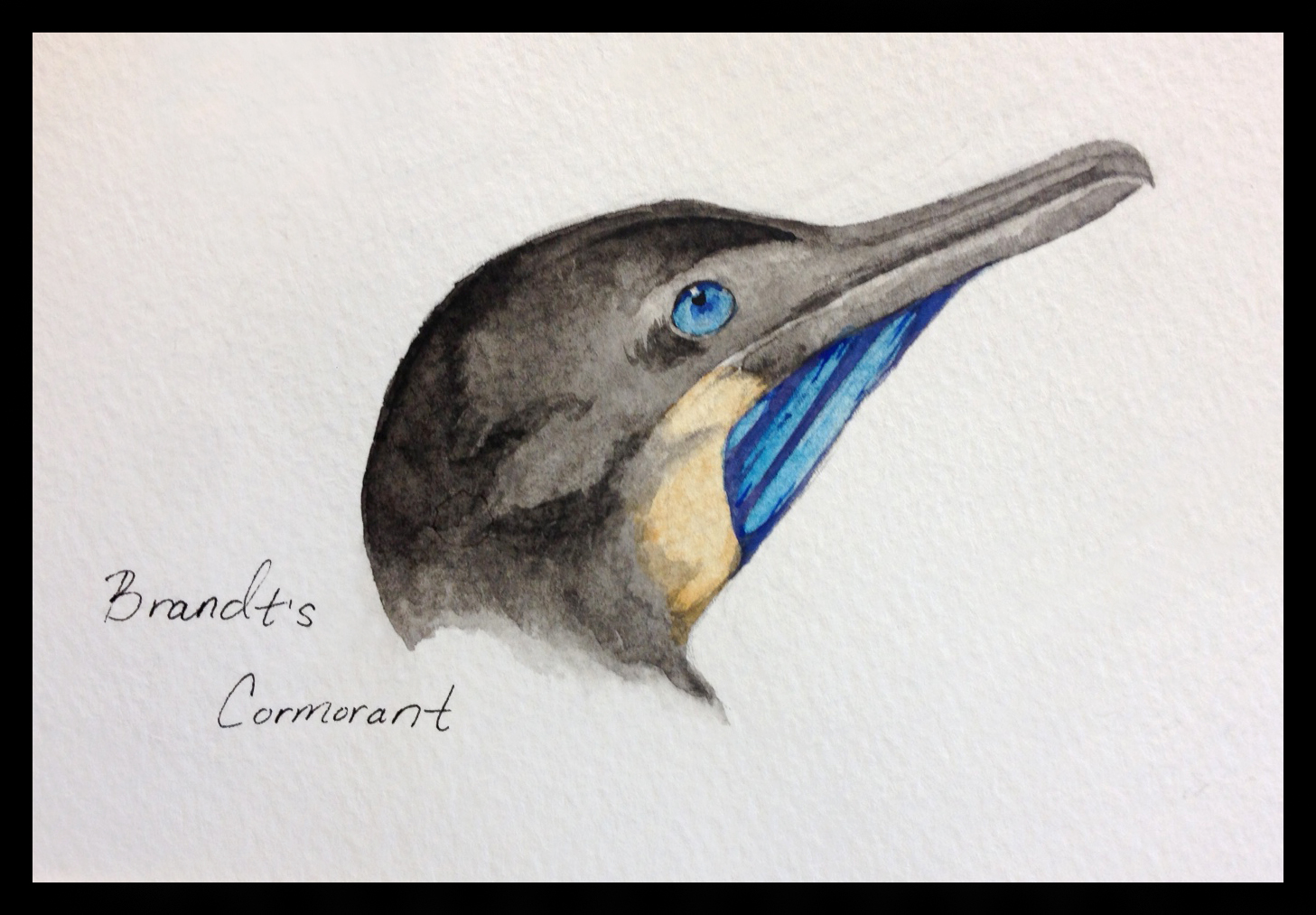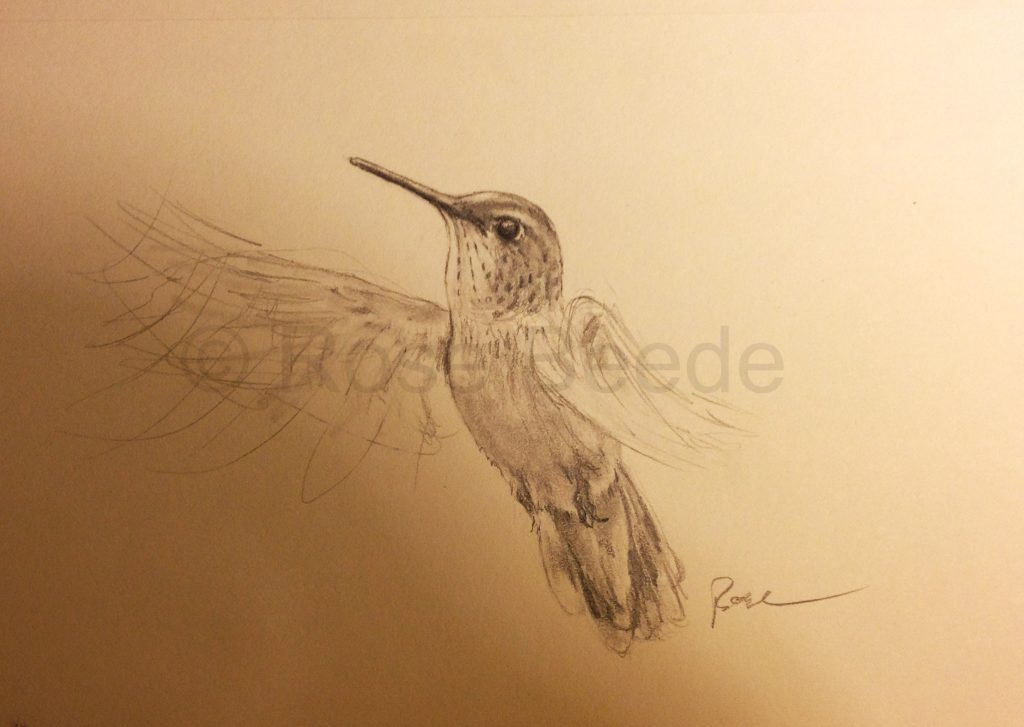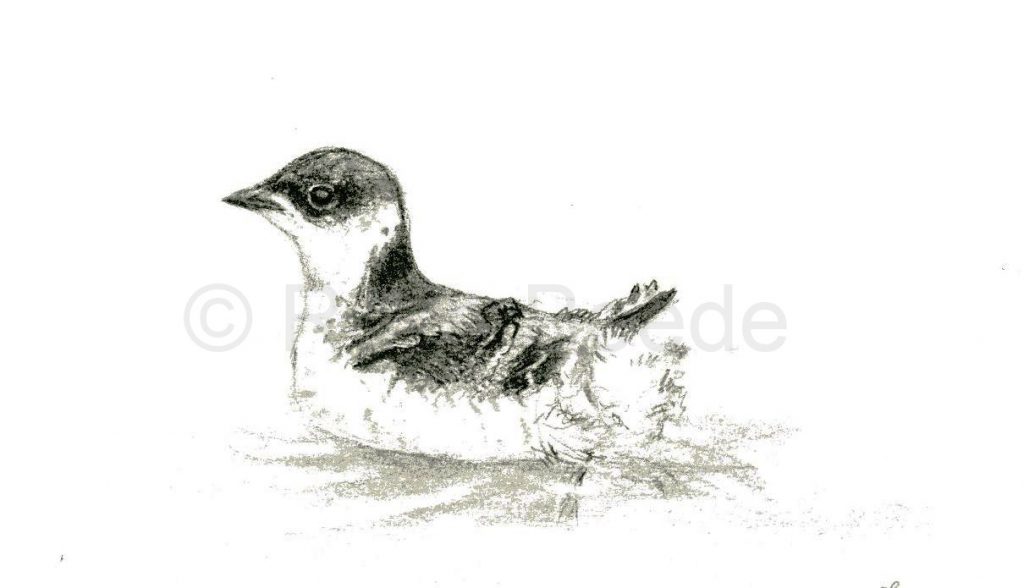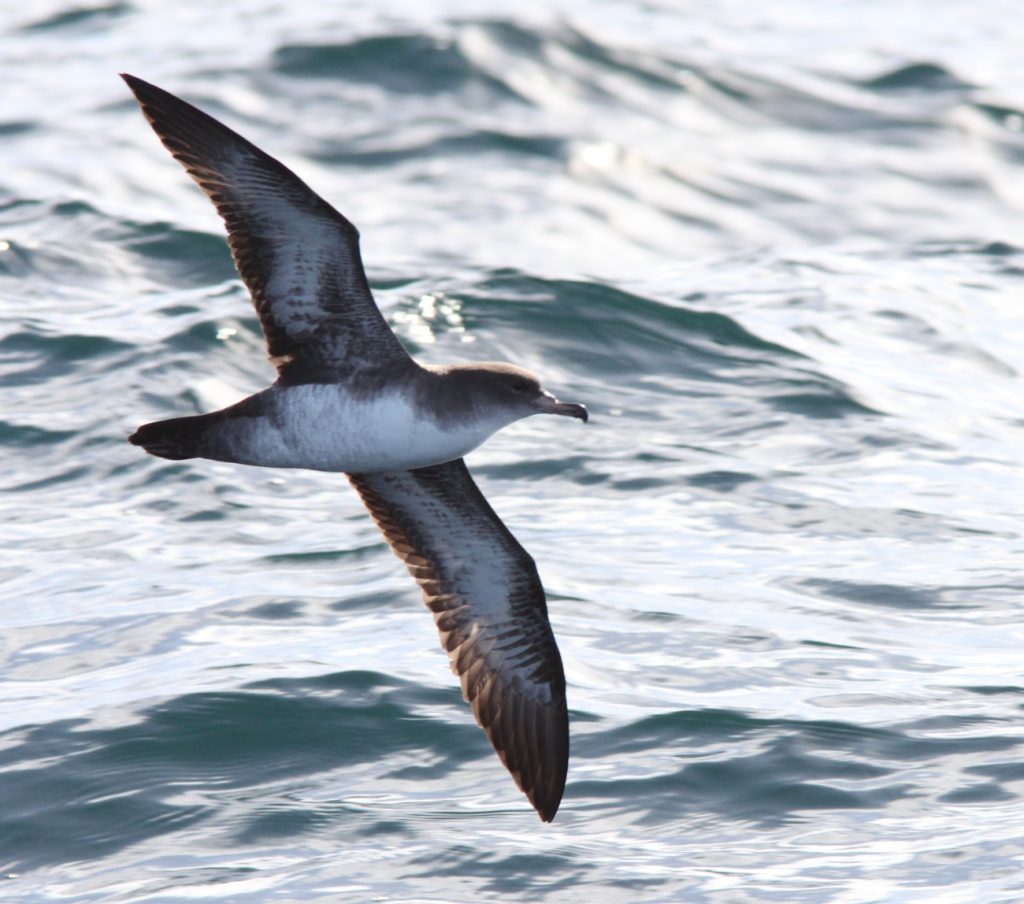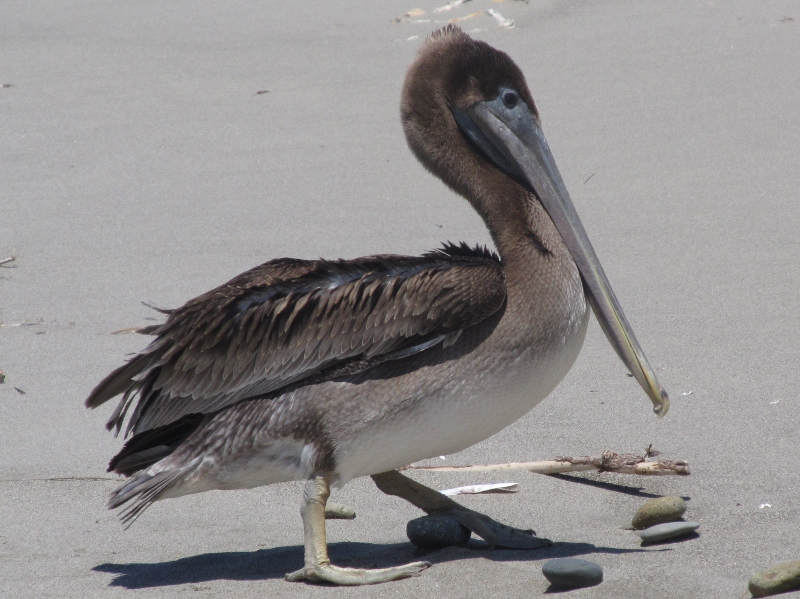A cool tactic is being employed to help protect the marbled murrelet, a seabird with a very unique breeding strategy. Although they are seabirds, marbled murrelets breed in old-growth redwood forests up and down the west coast. After laying a single egg, the murrelet parents will fly as much as 50 miles from the nest to the sea and back to bring food. Because they rely on these old-growth redwood forests to breed, their numbers are down 90 percent from their 19th-century numbers. Historically, deforestation, fishing, and pollution have been the bulk of the problem, but nowadays, with the redwoods protected by national parks, the threat comes from other sources.
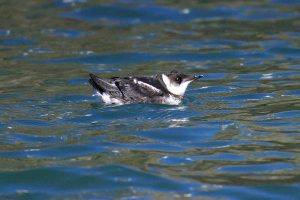
An adult marbled murrelet. About the size of a robin, they nest in California’s old-growth redwoods. Photo from USFWS.
The marbled murrelet population in central California is at the most risk, and this is largely due to the increase of Steller’s jays. These jays will steal the eggs and eat them, and have been responsible for the loss of up to 80 percent of each year’s brood. Because of this egg-stealing, the central California population of murrelets is threatened with extinction within the next hundred years.
The jays are found throughout the west, but have been booming in redwood forests because of the trash and food debris left over in campgrounds. These omnivorous birds will then find and eat murrelet eggs once they have established themselves in the redwoods. Because the jays are very smart and have very good memories, they will return to the same place multiple times looking for food. This is bad news for the murrelets, who use the same nesting sites year after year. Killing jays is not an option, because they are a natural part of the ecosystem. Instead, park biologists have come up with a smart way to deter the jays from eating murrelet eggs.
Although training wild animals might seem weird, in this case it is exactly what is being done. The jays are being trained to associate murrelet eggs with vomiting. Chicken eggs are painted to look like murrelet eggs and inoculated with carbachol, an odorless, tasteless chemical that induces vomiting.
These eggs are then fed to the jays, who vomit within five minutes of eating them, in order to teach the jays to avoid that particular kind of egg. So far, the testing phases of this unusual method of control have been very successful, reducing egg-stealing by 37 to 70 percent. This reduction is enough to keep the murrelets at a sustainable population size and decrease their chance of extinction in the next hundred years from 96 to 5 percent.

Stellar Jay populations are booming as they take advantage of crumbs and trash left behind by humans. Photo from USFWS.
There are a number of reasons why this program is so successful. First of all, jays are smart, long-lived, and have long memories, so once they learn that the distinctive murrelet egg coloration means vomiting, they will avoid them. Second, Steller’s jays are highly territorial, so untrained jays will stay away. Finally, murrelet eggs look like nothing else found in a redwood forest, so the jays are unlikely to confuse them.
While this innovative program is a very good start, the sheer number of Steller’s jays is still an issue. As parks open up more and more space to humans, the population of jays will only increase. Opportunistic animals like jays thrive in areas where humans leave trash and crumbs. Therefore, a number of parks are encouraging visitors to “keep it crumb-free” in an effort to educate the populace about the dangers of feeding wildlife. So the next time you’re camping in central California, remember the marbled murrelets are depending on you. Dispose of your trash correctly, clean up after yourself, and above all, don’t feed the jays.
Click here to read more about this unique project.

